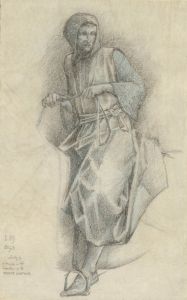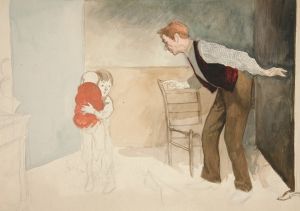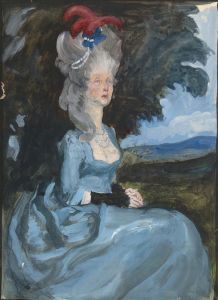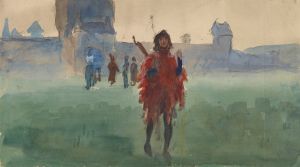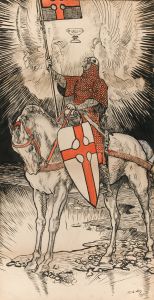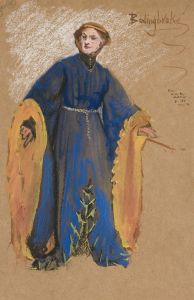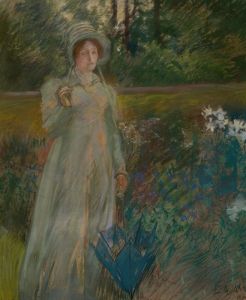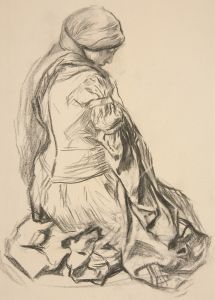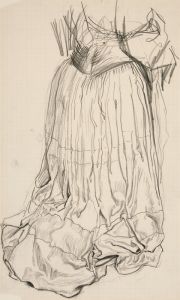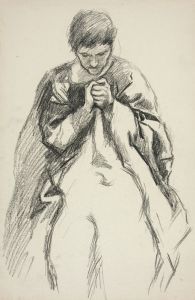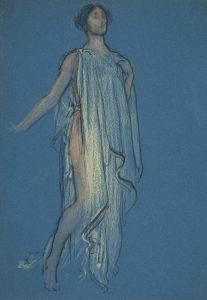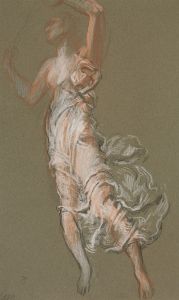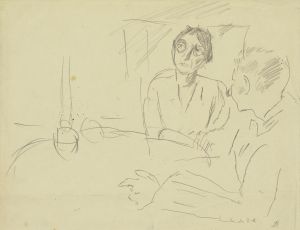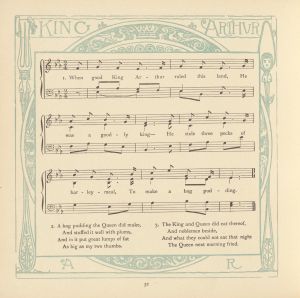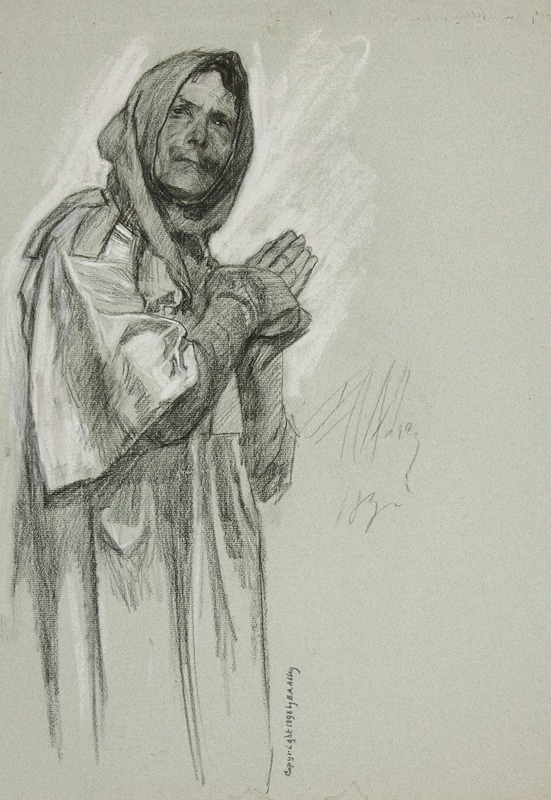
Study for ‘Arthur’s Round Table,’ from The Quest of the Holy Grail
A hand-painted replica of Edwin Austin Abbey’s masterpiece Study for ‘Arthur’s Round Table,’ from The Quest of the Holy Grail, meticulously crafted by professional artists to capture the true essence of the original. Each piece is created with museum-quality canvas and rare mineral pigments, carefully painted by experienced artists with delicate brushstrokes and rich, layered colors to perfectly recreate the texture of the original artwork. Unlike machine-printed reproductions, this hand-painted version brings the painting to life, infused with the artist’s emotions and skill in every stroke. Whether for personal collection or home decoration, it instantly elevates the artistic atmosphere of any space.
"Study for ‘Arthur’s Round Table,’ from The Quest of the Holy Grail" is a preparatory work by the American artist Edwin Austin Abbey (1852–1911). Abbey was a prominent illustrator and painter known for his detailed and historically inspired works, particularly those depicting scenes from literature and medieval history. This study was created as part of Abbey's extensive project to illustrate the Arthurian legends, specifically for a series of murals commissioned for the Boston Public Library in Massachusetts.
The murals, collectively titled The Quest of the Holy Grail, were commissioned in 1890 and completed between 1895 and 1902. They were designed to adorn the library's book delivery room, showcasing Abbey's interpretation of the legendary quest for the Holy Grail by King Arthur and his knights. The series is considered one of Abbey's most significant achievements and a masterpiece of American mural painting.
The study for "Arthur’s Round Table" reflects Abbey's meticulous approach to composition and historical accuracy. Abbey conducted extensive research to ensure the authenticity of his depictions of medieval costumes, architecture, and furnishings. This preparatory work likely served as a way for Abbey to experiment with the arrangement of figures, lighting, and other compositional elements before committing to the final mural. The Round Table, a central symbol in Arthurian legend, represents equality and unity among King Arthur's knights, and Abbey's study captures the solemn and ceremonial atmosphere associated with this legendary gathering.
Abbey's work on the Arthurian murals was heavily influenced by the Pre-Raphaelite movement and the romanticized medievalism of the 19th century. His attention to detail and narrative depth earned him widespread acclaim during his lifetime. The completed murals remain on display at the Boston Public Library, where they continue to be admired for their artistic and historical significance.
While the exact medium and dimensions of the study are not always specified, it is known that Abbey often worked in pencil, ink, and watercolor for his preparatory sketches. These studies provide valuable insight into his creative process and the evolution of his ideas for the final murals.
Edwin Austin Abbey's contributions to art and illustration have left a lasting legacy, and his Arthurian murals are regarded as a landmark in American art history. The study for "Arthur’s Round Table" exemplifies his dedication to storytelling and his skill as a draftsman.





